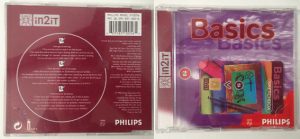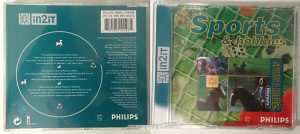|
History
 Philips has always been renowned for their creativity. One of the reasons of their success is their division called Philips Design. Over the years, this institution had created a large number of products, including the compact cassette player.
Philips has always been renowned for their creativity. One of the reasons of their success is their division called Philips Design. Over the years, this institution had created a large number of products, including the compact cassette player.
Around 1995, Stefano Marzano, Chief Design Officer and CEO of Philips Design, decided to explore the possibility of a handheld device aimed at girls between 4-12. The project was designed towards girls, because most similar products available in the 1990s were geared for boys. The project was dear to Stefano has he understood it was crucial to work on stimulating and educating people as early as possible.
Code-named Kidcom, the project started using the Philips Hi Design process to create a  concept that would be appealing to the target audience. The Philips process includes the co-design with the user has a very relevant and meaningful activity. Kids were asked to evaluate the concept, propose ideas, take pictures of elements of communication that they used, evaluate prototypes, etc. This process was performed at international schools in the Netherlands.
concept that would be appealing to the target audience. The Philips process includes the co-design with the user has a very relevant and meaningful activity. Kids were asked to evaluate the concept, propose ideas, take pictures of elements of communication that they used, evaluate prototypes, etc. This process was performed at international schools in the Netherlands.
With it’s a touch screen, infrared communication and smart card reader, the project was definitely ahead of its time.
Release
In 1996, Philips had finalized the product and a few hundreds units were made for internal testing and preview kit for media. But at the time the In2it was ready, the star was not aligned anymore. First of all, the Philips CD-i didn’t have the success Philips hoped for. They ran a very aggressive marketing campaign, but the system was not well received by gamers which affected the brand. The second problem was with the unit itself. The unit was quite big and the lack of back light, made the device hard to us e.
e.
But the biggest concern was the market segment. The device was mainly developed as a communicator for girls, a market that Philips didn’t want to enter. The device is, of course, able to play games, but the limited content developed at the time didn’t convince top management that the product could be viable. Even with more software were developed, the recent released of the struggling Casio Loopy proved that the market did want a video game devices aimed exclusively towards girl.
In the end, the project was cancelled. The few consoles produced were sold internally and lent for research project.
Games
The set of game cards include 16 different cards, including 6 Basic cards that are used for storage and operation of the console, 9 program/game cartridges and 1 promotional program.
FAQ
I’ve read somewhere that only 100 units were made and 5 were released to the public as part of a study. Is this true?
– No. There was indeed a study performed by the Department of Computer Science and Engineering of the Helsinki University of Technology with a In2it. The study was on five kids and aimed at finding out what the users do in their free time with their friends. The units were only lent by Philips and were returned at the end of the study. Also, not a hundred but a few hundreds of these devices were made. Theses were available internally and for researchers. I’ve also found traces of an online store for the KidCom, but at this point I cannot confirm they were actually sold to the general public. This still make this device incredibly rare, but there’s definitely more than 5 of them out there.
External Reference
Most of the information contained in this page came from a conversation I had with Stefano Marzano, various past interviews and research papers on the In2It. If you are interested in reading some of the research paper, a collection of them can be found HERE.

















